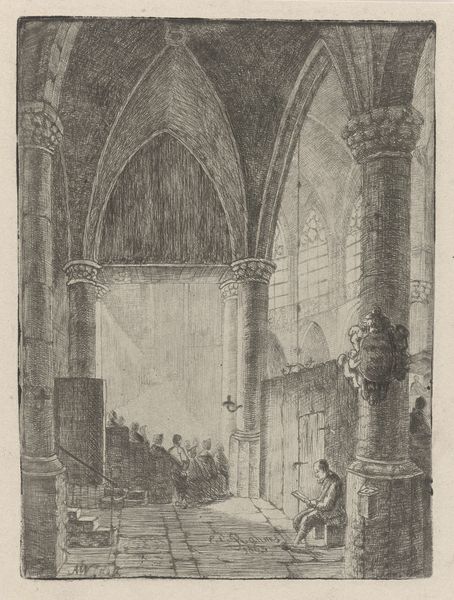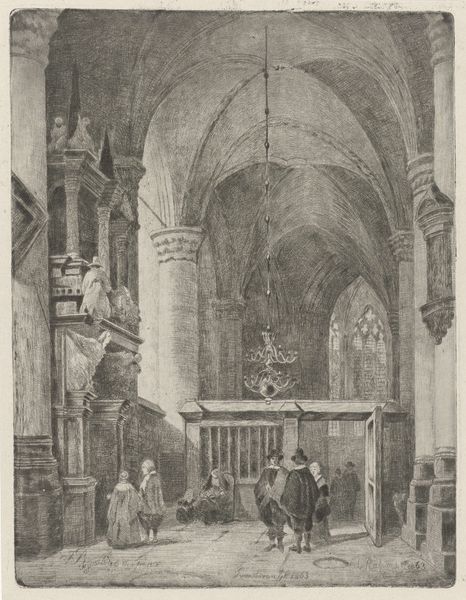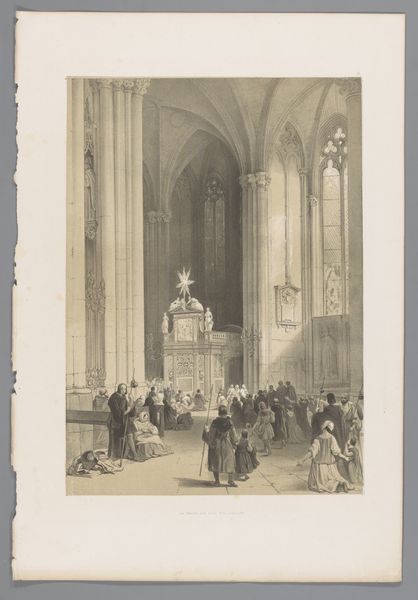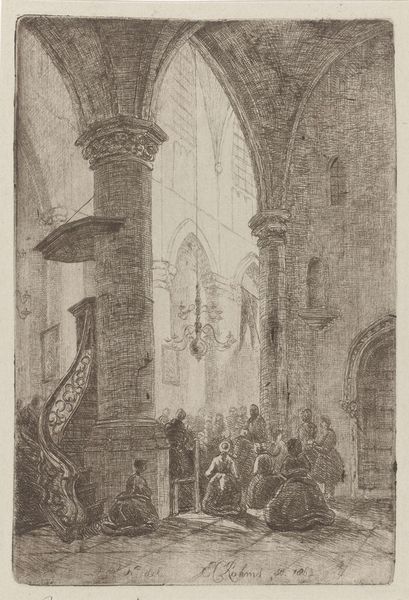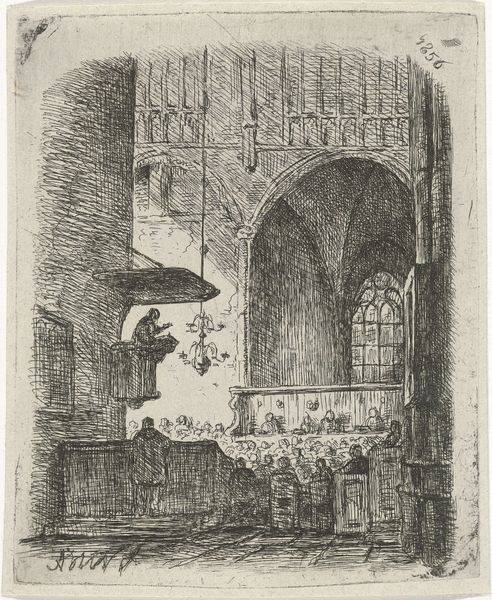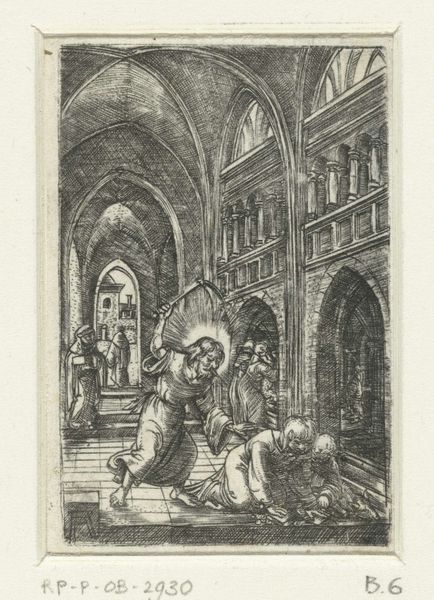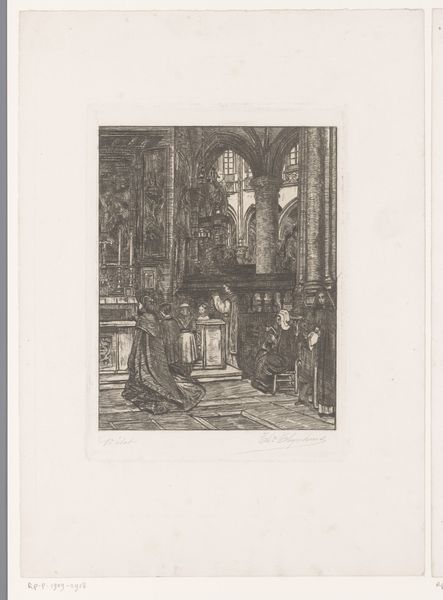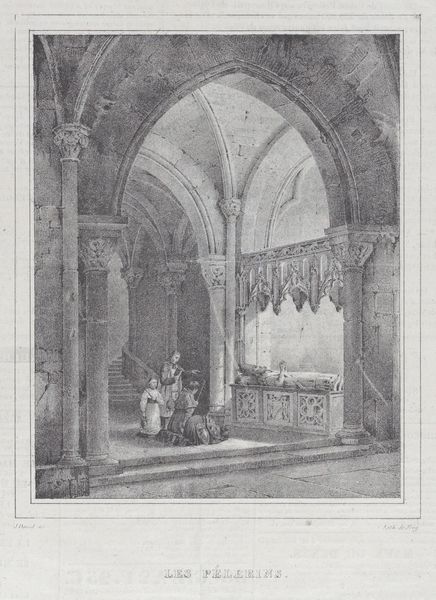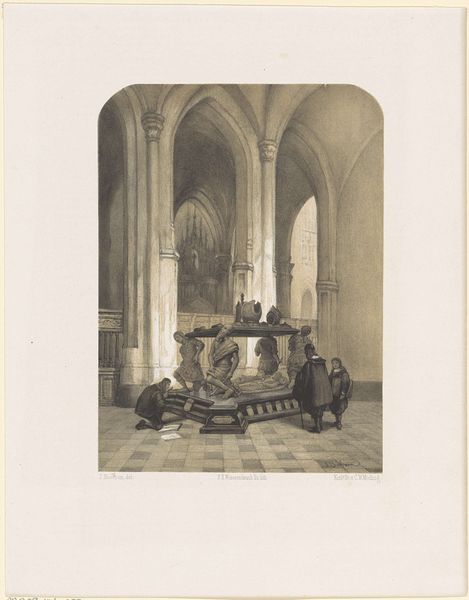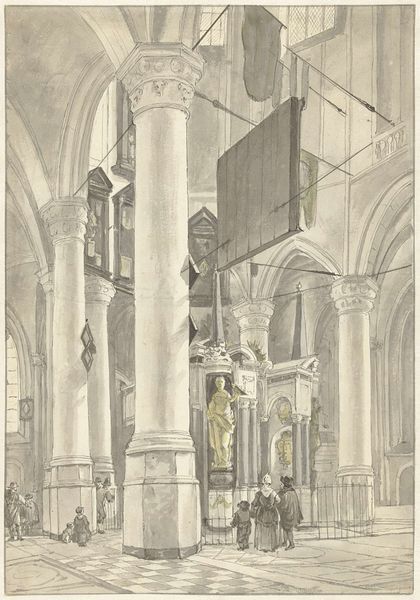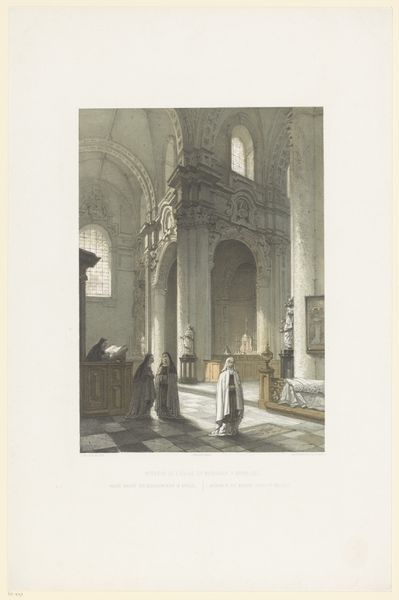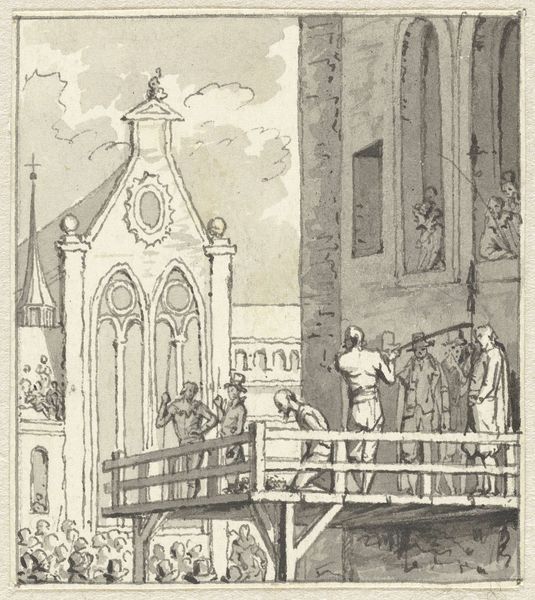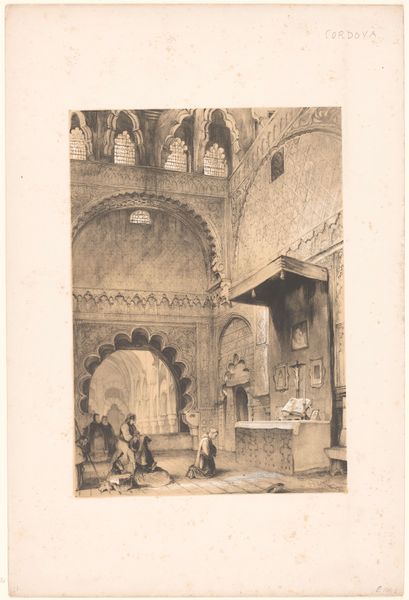
Grafmonument voor Engelbrecht II, graaf van Nassau-Dillenburg-Breda, 1504 c. 1834 - 1840
0:00
0:00
print, engraving
#
medieval
# print
#
old engraving style
#
19th century
#
history-painting
#
northern-renaissance
#
engraving
Dimensions: height 299 mm, width 237 mm
Copyright: Rijks Museum: Open Domain
Curator: This engraving, created by Wilhelmus Cornelis Chimaer van Oudendorp around 1834 to 1840, depicts the tomb monument of Engelbrecht II in the Breda Cathedral. What are your initial thoughts? Editor: Well, it's quite dramatic, isn't it? Very imposing, this dark mass of stone amidst the light and airiness of the cathedral. The pallbearers seem to be straining under the weight, and those monks on the side? Their gestures feel charged with meaning, like they are giving directions or sharing disapproval. Curator: It's a scene infused with the grandeur expected of depictions of nobility. Note how Oudendorp captures the monument's architecture within the cathedral's wider context. This portrayal serves to emphasize the count’s legacy and embed his personal history within a larger narrative. Editor: True, there is an intense feeling of weight and history pressing down, a somber mood despite the delicate rendering of the stonework through those tiny engraved lines. And that stark lighting accentuates the theatrics; everything is cast into deep shadows or gleaming light. What’s that pale figure, center stage? Curator: You are quite astute; it's meant to be the effigy of Engelbrecht, almost as if still present but transitioning beyond the earthly realm. These monuments played a critical role, publicly displaying power and continuity, asserting lineage, and projecting a family’s place in the complex societal fabric. Editor: Ah, that’s a great interpretation of a loaded scene. Now I see, everything about it feels calculated, every dark and light space meticulously etched to stir emotions— almost gothic but… more orderly. Even those figures on the sidelines—so passive yet directive—are pieces in a play where stone speaks of immortality and reputation. Curator: Absolutely. I would argue that the enduring value lies in its intricate interplay between artistic interpretation and historical record, revealing insights into power, legacy, and artistic choices within their specific social frameworks. Editor: Right then. For me, this print has that certain theatrical charge. Even in miniature, it speaks to an ambitious idea of legacy and that relentless urge to shout into the future, "Remember us!"
Comments
No comments
Be the first to comment and join the conversation on the ultimate creative platform.

